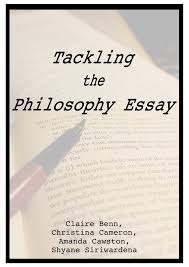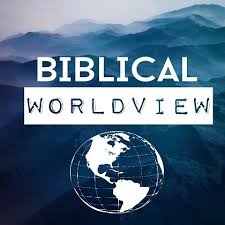
Cross-cultural competence at workplaces in U. S
Order Instructions:
See order description in your email address
SAMPLE ANSWER
Cross-cultural competence at workplaces in U. S
Introduction
In our day-to-day interactions and activities, we encounter various issues that affect the way we live and execute our duties. Behaviours of workers follow different systems already established. Theories as well enhance our understanding of these behaviors. Many researchers have applied different theories to guide their research and make sense of their various findings. Therefore, understanding various concepts of theories, ways of contributing to theory, types of theories among many others is important in understanding the way people work and even the way culture affects people behaviors at their work place. This dissertation therefore, deliberates on the different concepts and understanding of theories. The first part of the paper discusses scholarly views on nature and types of theories by comparing and contrasting views that constitutes of a theory incorporating Gelso (2006), Wacker (1998) and Harlow (2009) and other peer reviewed articles. The second incorporate Ellis & Levy (2008), and Harlow (2009) to establish how both qualitative and quantitative research contributes to theory. Ways that research contributes to theory is also deliberated. The last section deliberates on cultural competency theory in a work place, how it contributes to our understanding of the field and deliberates on two areas of controversy that relate to the theory.
Literature review
Part 1
For many years, different scholars have elicited mixed views of what constitutes a theory (Wacker, 1998; Gelso, 2006., &Harlow 2009). This discussion, has contributed to the development of huge chunks of information and ideas on the same. For that reason, a number of researcher use classification systems and typologies to describe different types of theories in the context of their functions, purpose goals and boundaries. Despite the fact that these controversies exist, comparing and contrasting their views enlarges our understanding of the theories. Gelso (2006), Wacker (1998) and Harlow (2009) capture the three major views that constitute a theory. Wacker (1998) argues that operationalization of the definition of a theory should be tied to the appropriate components of a theory, “Operationalization of the definition of theory should directly be tied to the necessary components of theory” (Wacker, 1998, p. 363). Wacker argues that a theory is composed of four major components. One of the components is definitions, second is domain of applicability, third is a set of relationships of variables and lastly specific predictions or factual claims. A theory need defining to understand what it s meaning. It should be able to provide assistance or be applied in a given field. A theory should as well be able to create a relationship between various variables and should be able to provide predictions specifically relevant to a certain situation. The views held by Gelso (2006) are developed from those of Ryschlak (1968) who claimed that any good theory require to be explicitly stated with the intention of formulating a logical consistent and mutual interdependent body of knowledge. He further stated that a theory serves a number of functions. These functions include delimiting, descriptive, generative and integrative. Gelso (2006) develops this thought and argues that any theory is expected to have a scientific value and should be broad hence, go beyond simple propositional level. Theories therefore need not to describe and explain phenomena effectively only but should have or place a limit on what is examined and as well should be generative to stimulate in-depth or further investigation. Gelso (2006) therefore has developed eight constructs that guides his definition of theory. The construct that make up a theory include the following; explanatory power, descriptive ability, testability, heuristic value, parsimony, integration, comprehensiveness, clarity and delimitation. The construct are based on the assertion that any theory has the capability to generate research and the research generated can refine the theory. A theory even though need to have integrative function to accommodate various contradictory propositions, it must as well exhibit characteristics of parsimony meaning that it should have ideas and constructs that can aid in explanation of the phenomenon under investigation. Harlow (2009) on the other hand holds the view that a theory need not to have a universal or fixed meaning but need to consider the competing research paradigms. Therefore, this implies that a theory has the capability to suggest a determining law, laws or systems in natural sciences or can elicit constructs set that aid in understanding phenomenon.
Despite these views from these three scholars, many more researchers have developed their own ideas and constructs of what they do understand about theories in relation to the competing world paradigms (Gay & Weaver, 2011). Different taxonomies exist in relation to theory due to various approaches to theory, conflicting assumptions, competing conceptions and intellectual curiosity based on their individual worldviews. According to Gay and Weaver (2011), the approach to theory that researchers decide to apply depends on the research goals and assumptions. This means that researchers will utilize certain theories and ignore others based on the goals they want to attain and the individual assumptions about the importance of the goal to the current situation faced. Conceptual development of a theory is an informed concept framework that researcher can employ to have an initial understanding and explanation of the nature dynamics concerning an issue, phenomena, problem, that the theory focuses on. DiMaggio (1995) provides three views of what he perceives a theory needs to be. One is that a theory should cover laws, theory is enlightenment and it is a narrative. This means that a theory is abiding and provides a sense of direction or knowledge and is written in a narrative way to enhance understanding of what it means.
Even though there are many competing views, examining the relationships between theory and related paradigms, concepts, hypothesis, models is important to gain an explicit view on the types and nature of theory. Kerlinger (1986) states that a theory consists of two or more constructs, concepts, abstracts, definition, propositions hypothesized with review of phenomenon to predict and explain the phenomena. Theories therefore have theoretical propositions and hypothesis that come from these propositions. According to Sutton and Stow (1995), hypotheses are important bridges between theory and data. Propositions on the other hand are statements used to express the relationship of two or more concepts. Concepts on the other hand according to Bachman and Schutt (2007) means ‘mental image that summarize a set of similar observations’ (p. 72). Models even though are employed by researchers to demonstrate or indicate connectedness of variables within a theory they are not part of the theory. Paradigms on the other hand are general ways of how researchers view the phenomenal world while on other hand, theories are defined as systematic sets of interrelated constructs and statements used in explanation of some aspects that relates to social life (Gray & Weaver, 2011, p, 26).
Part 2
Theory plays a central role in research and there exists a relationship between theory and research. Even though, in most instances, theory guides research, they are interrelated and dependent on each other when it comes to making sense of a phenomenon. Similarly, research may contribute to some significant levels to explanatory power of a theory, when it comes to increasing or building knowledge effectively, research process is developed using a theoretical framework. Therefore, having research knowledge helps in theory contribution more incrementally as it adds more lexicon of facts on the already body of knowledge.
The core definition of research is that it helps to collect and analyze new data or information hence helping to enhance the body of knowledge (Ellis & Levy, 2008). Therefore, theory is applicable in the normal living situation as it gives meaning to various stakeholders. According to Harlow (2009), to develop a theory, it is expected that the researcher develop a test hence an indication of their inter-linkage. Therefore, the relationship of a theory and research is based on the fact that the two require building and testing. Another connection between a theory and research starts with problem definition and the generation of research idea. Research projects starts by reviewing literature appropriate allowing the researcher to engage the same using existing theoretical explanations of the topic in that question (Harlow, 2009). The construct or theory requiring testing informs the kind of cases that will be studied, data to be gathered, methods of data collection and the ways of analysis in the data. For instance, in inductive research strategy, the researcher develops a theory from the existing data and this can be a good starting point in the case where there is limited theoretical knowledge pertaining to a specific phenomena. Inductive strategy therefore allows researcher to build their own cases to come up with a new theory from the already existing data while deductive researcher theory testing finishes the cycle as researcher use research data/information in testing of the theory.
There are various ways research contributes to theory. Ellis and Levy (2008) have taken an interesting in this area and have deliberated on seven ways where original research contributions can be incorporate or transformed into body of knowledge. The contribution are summarized using various constructs; examination of elements, establishment of casual relationship, ways of product creation through developmental study, predictive model development, constructs development, efficacy evaluation and examination of impact of time on the nature of the problem already documented in the study. Sometimes researcher is expected to reframe and test ideas to ensure that conclusions reached are trustworthy and reliable. Building any theory require rich empirical research data hence such theories produced are guaranteed to be interesting, accurate and testable in any research environment. Ellis & Levy (2008) argues that in order for anything or endeavor to be categorized or considered as research it needs to demonstrate the potential of developing new ;knowledge that is identifiable (p. 23). Therefore, research helps researchers understand a phenomenon. It is through inquiry of a given aspect that allows a researcher to discover new knowledge and information that provides deeper understanding.
Discussion
Part 3
Even though, different researchers have come up with different views concerning a theory, for the sake of this discussion, Wacker (1998) theory fits the topic of the dissertation. Wacker (1998) states that a theory is able to provide framework to analysis, facilitate development of academic field, hence require application in real life to solve problems. A number of articles published in the previous five years help to create the applicability of theories relating to cross cultural aspects in the work place in US.
Cultural competency theory is one of the theories that provide deeper insights on the workplaces in US. US has people from various cultural backgrounds hence the workplace enhances diversity. Cultural competency theory is derived from a constructionist view. The theory therefore refers to the ability of people from different cultures and eve socio-economic backgrounds to interact effectively at their workplaces it advocates for integration and working together of people from different ethnic and cultural backgrounds. Cultural competences have various components; one is being aware of one’s cultural worldview, second is the attitude towards cultural differences, knowledge of different worldviews and cultural practices and cross-cultural skills. Therefore, understanding cultural competencies allows people to understand each other, communicate and as well interact with the other people.
This theory by the fact that it is derived from the constructionist view, it implies that people generate knowledge and meaning through the ideas and experiences they have had. Understanding the cultures and the operations of an organization, it requires workers to have a positive mental orientation about other people. Workers as well embrace one another easily if they know and understand their culture and other people cultural backgrounds. Therefore, this constructionist view is the foundation of cultural competency theory which aides in the achievement of the cultural competent.
This theory relates to various views and nature of theory discussed in the literature review. The constructs developed by Gelso (2006) provides a guide when it comes to defining this theory. The constructs that make up cultural competence theory include explanatory power, descriptive ability, testability, parsimony, heuristic value, integration, comprehensiveness, clarity and delimitation. These constructs asserts that any theory has the capability to generate research and the research generated transformed into a theory. The theory has explanatory power as it provides an insight about the theory. It is also descriptive because it provides a clear description of cultural competence. It can be tested to ascertain whether it is true through research.
It also exhibits attributes of parsimony as it has constructs and ideas that aid in explanation of the phenomenon. It has integrative function because it accommodates contradictory. The theory is compressive as it captures various aspects that pertain to culture. It is also clear and his enhances its understanding. People can easily understand the theory meaning and implications. It has as well heuristic value implying that is can be adopted through speculative formulation to guide in the investigation and in solution of problems. Organizations can adopt this theory to gain a deeper understanding of the cultural environment of an entity.
The theory has been adopted in various researches by researchers hence, a clear indication of its significance in enhancing understanding of cultural dynamics in the workplace. . Various peer reviewed journals help to develop propositions and constructs that help them to generate knowledge pertaining to cultural competence theory. In the study, Chrobot-Mason (2012), ethnic and racial identify theory is adopted to provide insight on the topic of study (p. 201). The theory argue that people progress through a number of stages as they develop attitudes and beliefs towards their racial group and other groups they belong to. Therefore, such a theory provides a foundation for the researcher to understand indeed, the way ethnic group of an individual helps them identify themselves and cope with others. Furthermore, this theory helps the researcher to have an in depth understanding of the topic. The theory as well provide a framework to analysis the issues of cross culture and facilitates development of academic information that others can use in their own life. Organizations can be able to use this information to ensure that they make some improvements to promote diversity at the workplace.
Controversies as well exist on how the theory has been used in research. The area of controversy that relates to the theory is the aspect of explanation and predicating as the purpose of research. The four components that make up this theory is definitions, an aspect of how it can be used /applied, sets of relationships with the variables and lastly to have specific prediction or claims that are factual. Therefore, the theory has some issues or questioned that are not well answered. One of the question concerns the central points that makes up a theory. The theory is expected to generate idea, it should also be in a position to generate hypothesis and provide an interpretation of the study findings. The concept of heuristic value helps to explain contradictory preposition through formulation of speculations on how the theory can help to solve a problem in the organization is misinterpreted. This may contribute to false assumptions and results.
Recommendation
It is indeed evident that the relationship between theory and practice is important as they both direct each other. There are still some controversies, issues and assumptions on how a theory can be transplanted into practice. It is therefore important that theories are well formulated to provide solutions in real life. This will help to manage knowledge transfer problem. Dialogue and information sharing among scholars and even practitioners is essential in addressing the misassumptions that may be there between theory and research and practice. Researchers as well need to understand that theories and research have relationship and they help to create understanding and knowledge on different aspects or phenomena. Theories require frequent updates and it is therefore, recommended that researcher keep in touch on the development of theories. As new one are developed some of the previous ones become obsolete. Old theories can be retested to be in a position to build new and updated ones.
Conclusion
Theoretical concepts are many as researchers continue to conduct research-using theories. Therefore, understanding theories and their constructs, paradigms among others is important for any researcher. There exist interlinkage between theory and research. These interrelations are essential in helping enhance understanding of various aspects and concepts or phenomenon. Theories provide explanatory advantage on various problems, present innovative features and provide predictive utility. Various researchers have as well provided different approaches and understanding of theory. These comparisons and contrasts have helped to increase understanding of theories in research work. Some of the theories have some bridges or gaps that are filed by other researchers or theorists. Various peer-reviewed journals have deliberate in-depth on the issues of cross-cultural competencies in work place in US. Most of them have employed different theories to enhance understanding of their topics.
References
Bachman, R., &Schutt, R. (2007).The practice of research in criminology and criminal justice (3rd ed.). Thousand Oaks, CA: Sage.
Chrobot-Mason, D. (2012). Developing multicultural competence to improve cross-race work relationships. The Psychologist-Manager Journal, 15(4), 199-218. Doi:10.1080/10887156.2012.730440
DiMaggio, P. (1995). Comments on what theory is not‘. Administrative Science Quarterly, 40, 391-397.doi: 10.1177/0092070306291975
Ellis, T. J., & Levy, Y. (2008). Framework of problem-based research: A guide for novice researchers on the development of a research-worthy problem. Information Science: the International Journal of an EmergingTrans-discipline, 11, 18-33.
Retrieved from http://www.mendeley.com/research/the-synergy-of-applying-virtual-collaboration-tools-andproblembased-approach-for-development-of-knowledge-sharing- skills-empirical-research-1/
Gay, B., & Weaver, S. (2011). Theory building and paradigms: A primer on the nuances of theory construction. American International Journal of Contemporary Research, 1(2), 24-32. doi: 10.1111/j.1469 -5812.2007.00349.x
Gelso, C. J. (2006). Applying theories to research: The interplay of theory and research in science.In Leong, F.T., &Austin J. T. (Eds.).The Psychology research handbook. Thousand Oaks, CA: Sage.
Harlow, E. (2009). “Contribution, theoretical.”Encyclopedia of Case Study Research. Retrieved from
http://www.sageereference.com.proxy1.ncu.edu/casestudy/Article_n89.html
Kerlinger, R. (1986). Foundations of behavioral research. New York, NY: Holt, Rinehart, & Winston.
Rychlak, J. F. (1968). A philosophy of science for personality theory.Boston, MA: Houghton Mifflin
Sutton, R., &Staw, B. (1995). What theory is not.Administrative Science Quarterly, 40, 371-384. doi: 10.1234/12345678
Wacker, J. (1998). A definition of theory: Research guidelines for different theory-building research methods in operations management. Journal of Operations Management, 16 (4), 361–385.doi:10.1016/S0272-6963(98)00019-9
We can write this or a similar paper for you! Simply fill the order form!












